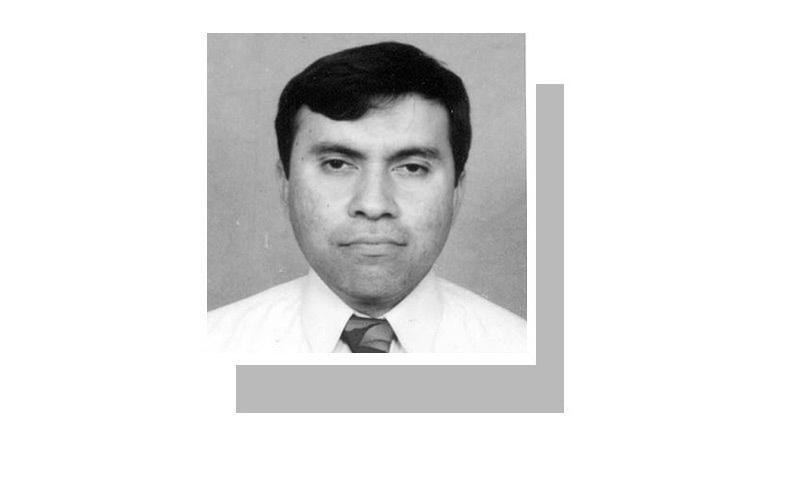
SOME days ago, the Sindh minister for local government inked a deal awarding the rights of solid-waste management in Karachi’s District South to a Chinese outfit. The deal is valued at Rs2 billion. The Sindh Solid Waste Management Board Act 2014 provided the minister the administrative privilege of outsourcing this vital municipal function.
In fact, the province has assumed many responsibilities related to municipal controls, regulations and management during the recent past. For example, the Sindh Building Control Authority not only oversees building construction and zoning matters in Karachi and the rest of the province, it is also given the task of planning for the city. Water and sanitation are looked after by a provincially constituted board under the Karachi Water and Sewerage Board Act 1996. Even the elected Karachi Metropolitan Corporation and six district municipal corporations have to perform their limited functions within the tightly carved-out administrative space under the Sindh Local Government Act 2013.
This position shows that political forces that dominate the provincial administration and local institutions, respectively, are locked in an administrative combat of mistrust and suspicion. Each faction is quick to outfox the other, when the political privilege comes their respective way.
An efficient administrative arrangement with the blessings of the centre, province and city is required.
As per the requirement of populist politics, tiers of government weigh interventions on the scale of public appreciation. It is no secret that visible symbols of ‘development’ and ‘progress’ are important for gaining popularity among the masses. The government of Sindh and local institutions, therefore, compete to grab the credit for planning and developing these in a pronounced manner.
Flyovers, underpasses, arterial roads, new building complexes and elevated causeways are a few examples which seem to account for the performance of a regime. And these components of physical development require very high capital expenditure, more so in the prevailing contractual modes under which such structures are executed.
The passage of the 18th Constitutional Amendment and outcomes of the National Finance Commission awards have extended enough funds to the province to undertake large-scale mega projects. Therefore, the government of Sindh deems it appropriate and politically viable to monopolise the development works in Karachi and elsewhere in the province.
‘Super’ developers, realtors, invisible investors and agents of the establishment have evolved working relationships to get their multibillion-rupee enterprises moving. In the prevailing political scenario, the bargaining clout of local institutions — especially in connection with budgetary allocations — is very limited. With the mayor of Karachi in jail, the vacuum of leadership becomes further protracted.
The political relationship between Karachi and the province has experienced many ebbs and flows. After 1947, Karachi was declared a capital territory under the control of the central government. This move greatly irked the political elite of Sindh, many of whom protested openly. Despite the shifting of the national capital to Islamabad and the headquarters of West Pakistan to Lahore under the erstwhile One Unit scheme, Karachi remained the commercial, industrial and business hub of the country during the 1960s and beyond.
Karachiites opposed the dictatorial policies of the Ayub Khan regime and voted against him during the 1965 presidential elections. The city was a centre point of opposition parties including the Jamaat-i-Islami and Jamiat Ulema-i-Pakistan during the 1970s. The PPP, the dominant political force in Sindh, was not able to win majority seats in Karachi in any election since 1970 till today. Some believe that it is a major cause of the city’s woes.
Interestingly, military dictators gave greater powers and resources for development work in the city than did elected governments. Local governments were also regularly constituted through adult franchise in military regimes and given sufficient powers and mandates. The provincial governments would immediately wrestle back the powers, privileges and resource control once the period of dictatorship ended. Karachi and many other cities in Sindh have been suffering from this administrative paradox since 2008.
It is clear that the present provincial government is not willing to devolve any power, resource share or responsibility that could make local institutions visible in city affairs. Perhaps taking inspiration from Punjab, the Sindh administration intends to run the city by awarding development and management contracts to the private sector. With no powers or initiatives left at their disposal, the elected local governments can only cut a sorry figure — turning in negligible performances — by the time their tenure ends. While this may appear a wise political strategy for a specific political camp, it is not in the interest of the city or its dwellers in any way.
Rundown streets; overflowing drains; nonperforming water supply networks; haphazardly densifying neighbourhoods; dilapidated katchi abadis; increasing traffic congestion due to the rising numbers of cars and motorbikes; unplanned sprawls along suburban fringes; and the ever-increasing mounds of garbage are some indicators that the present administrative arrangement is not delivering. An efficient and capable administrative arrangement with the political blessings of the centre, province and the city is required.
But a political solution to this administrative malady is not simple, given the status and significance of Karachi in the national and provincial context. It is an undeniable reality that Karachi is an anomaly in Sindh’s political and administrative affairs. For instance, the city accounts for 44 per cent of the population of the province with 25pc representation in the provincial assembly. Moreover, the provincial mandate of managing law and order seems to have slipped into the hands of the establishment.
The city, with its evolving amorphous urban limits, has slowly transformed into a sprawling conurbation of settlements. New institutional arrangements must be worked out through a consultative process between all the stakeholders. Karachi is too important a city to be left to the vagaries of inaction.
The writer is professor and chairman, department of architecture and planning, NED University Karachi.
Published in Dawn November 8th, 2016











































